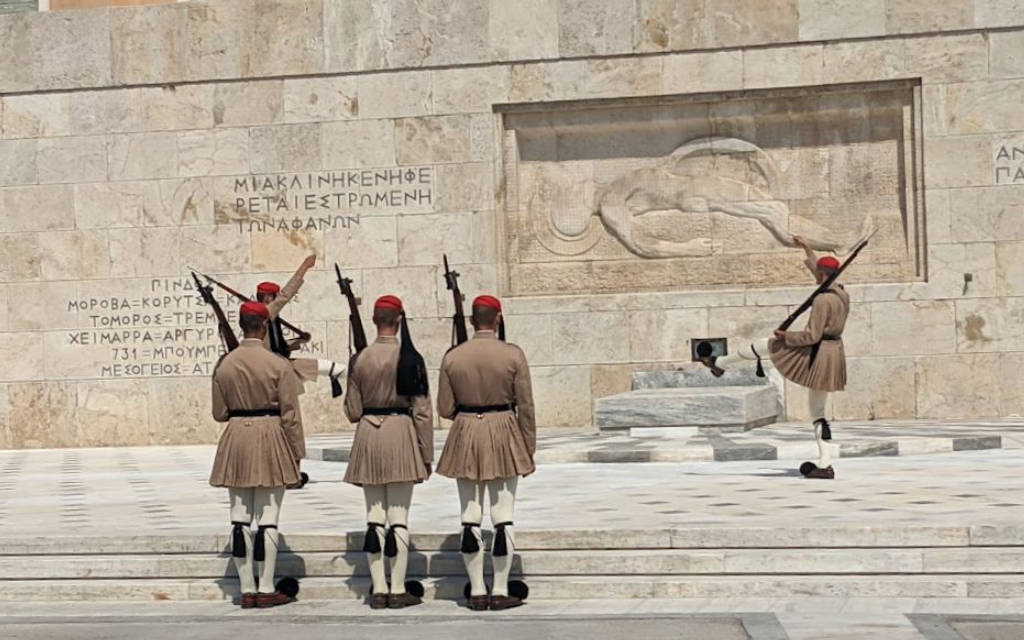The Monument to the Unknown Soldier is a war memorial located in Syntagma Square in Athens, in front of the Old Royal Palace. It is a memorial dedicated to Greek soldiers killed in war. It was sculpted between 1930 and 1932 by sculptor Fokion Rok.
The tomb is guarded by Evzones of the Presidential Guard.
The decision to build the monument was made by military general and “constitutional dictator” Theodoros Pangalos. As Minister of the Army, an advertisement was placed in the newspaper Espera, asking "to submit a study for the construction of a mausoleum of the Unknown Soldier, in front of the Old Royal Palace, suitable for this purpose ". On October 9, 1926, the Department of the Army approved and granted a majority for the study conducted by architect Emmanuel Lazaridis.
The location of the monument at the Old Palace was proposed by the architect himself and Pangalos, who wished for the Ministry of the Army to be housed in the building. However in 1929, after a fervent reaction and continuous meetings, Eleftherios Venizelos, setting aside his differences with Pangalos, decided that the best location would be the original one in Syntagma Square, on the grounds that because the Monument had to be in the city center, like the Arc de Triomphe in Paris.
Inaugurated in 1932, with the presence of the Turkish delegation
The building committee assigned full responsibility for construction to Lazaridis. He initially worked with sculptor Thomas Thomopoulos, who proposed a central sculpture representing the Gigantomachy with an angel (representing Greece) lovingly receiving the dead soldier. Although Lazaridis initially agreed to the design, Thomopoulos's sculpture was never built due to lack of funding.
Instead, in 1930, Lazaridis commissioned Fokion Rok as sculptor with the unanimous decision of the building committee. The committee then approved a new proposal for a sculpture, a gunner lying on the ground. This design is considered suitable due to its quietness and simplicity.
For construction, a large-scale excavation and leveling of the terrain took place.
The mausoleum was inaugurated on March 25, 1932 by then Prime Minister Andreas Michalakopoulos, with the participation of many foreign delegations, followed by a parade of the guardians of the monument. At the same time, a torch was brought from the Agia Lavra monastery to light the eternal flame in the center of the monument.
 Register
RegisterSign in Travel Agent
Sign in Supplier
Sign in Affiliate
Sign in Guru



 XPGP+4G, A-ten, Hy Lạp - 37.975460373642015, 23.736559345075225
XPGP+4G, A-ten, Hy Lạp - 37.975460373642015, 23.736559345075225